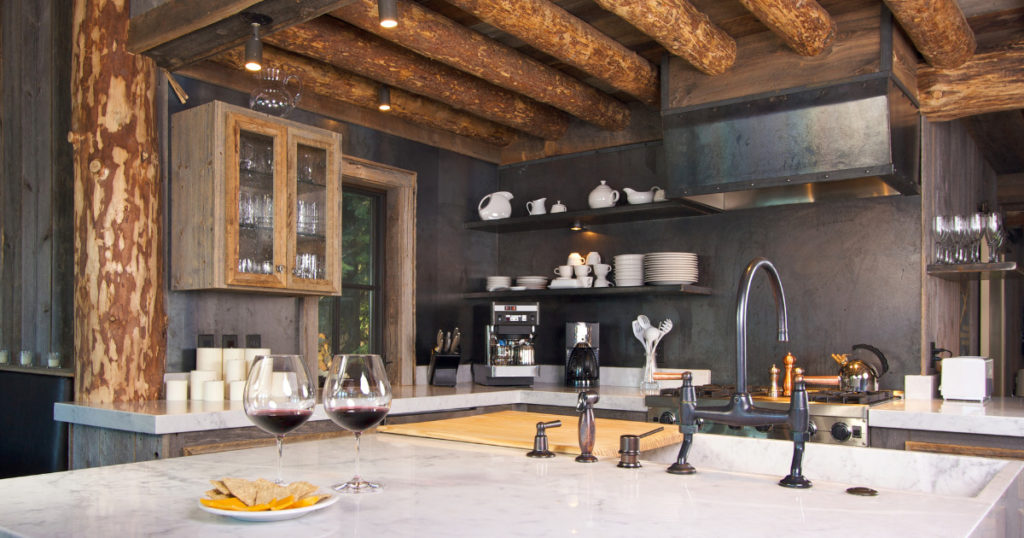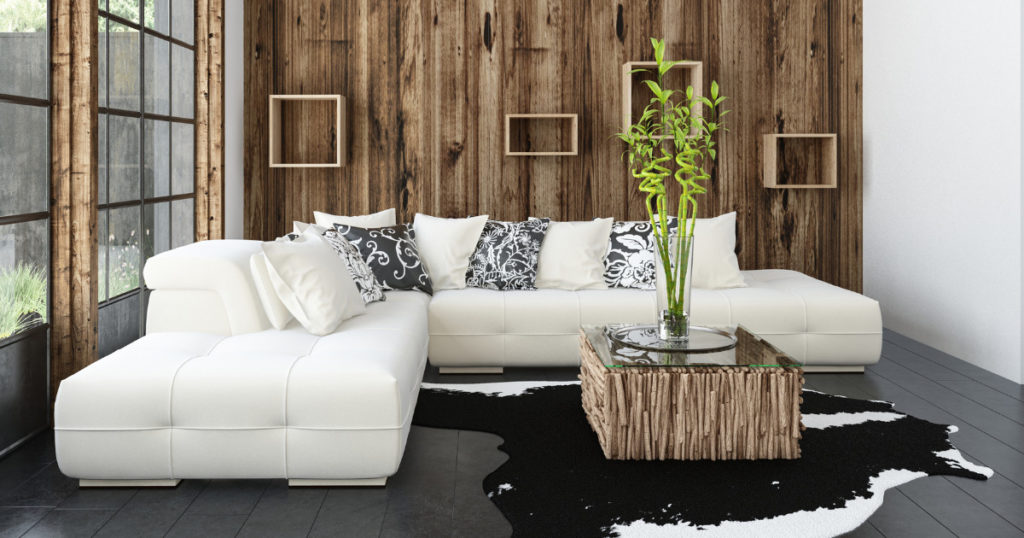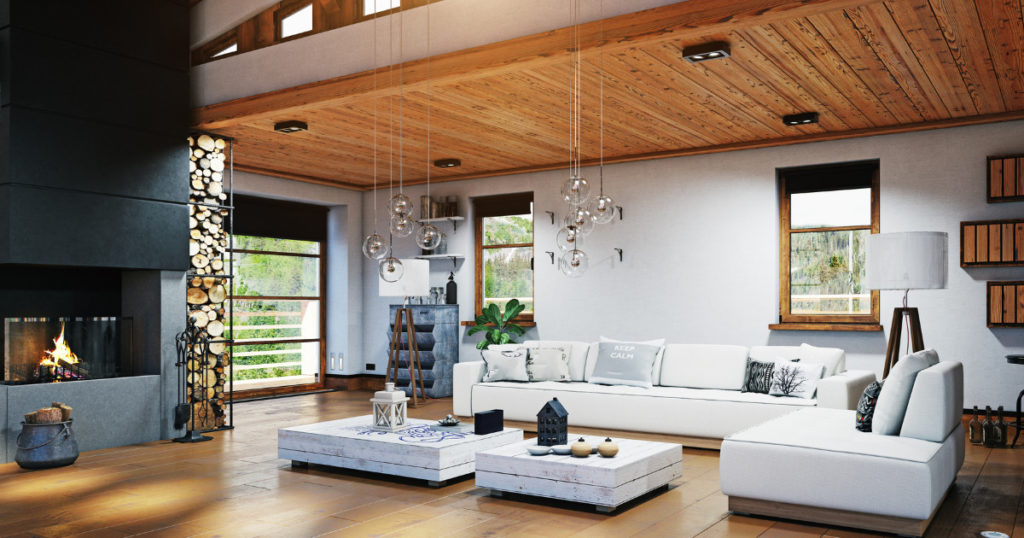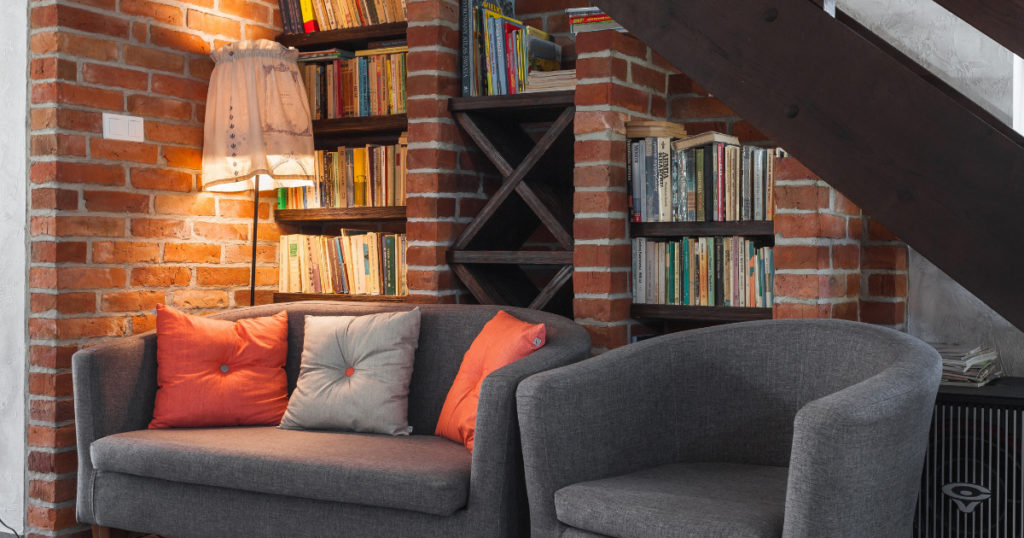In the world of interior design, there are so many themes and styles to choose from. One particular design style that’s become very popular recently is Rustic Interior Design. The purpose of Rustic design is to create a warm and welcoming environment that embraces simplicity and natural beauty. In this blog post, we’ll dive into the fundamental principles of Rustic design and how to implement them, so that you can turn your space into a cozy retreat.
At its core, rustic interior design is characterized by its emphasis on natural materials, earthy colors, and textured accents. This design style draws inspiration from nature, with a focus on bringing the outdoors inside. The overall goal is to create a space that feels warm and welcoming, with a timeless appeal.
There are several advantages to applying rustic design elements to a room. It may, first and foremost, produce a warm and welcoming environment that makes you feel at home. In addition, whether you live in a chic apartment or a comfortable cabin, rustic style is adaptable and can be used in every space. Your space can feel special and unique because of the character and individuality that rustic design can provide.
Throughout this blog post, we’ll explore the fundamental characteristics of rustic interior design, including the use of natural elements and vintage accents. Also, we’ll provide tips to implement some rustic design principles into your own space, including furniture, decor, and color palette selection. After that, we’ll discuss modern rustic interior design specifically, and explain some rustic decor that can add personality to your space. Whether you’re starting fresh or going for a re-fresh, by the end of this blog you’ll have clear direction about transforming your space with rustic design.
Key Characteristics of Rustic Interior Design

Rustic interior design is characterized by a number of key elements that work together to create a warm and inviting atmosphere. These include the use of natural materials, an emphasis on texture, an earthy color palette, vintage or antique pieces, and a cozy and inviting ambiance.
Natural Materials:
One of the hallmarks of rustic interior design is the use of natural materials such as wood, stone, and metal. These materials bring a sense of the outdoors inside and create a connection to nature that is so essential to this style. Look for furniture, decor, and accents that feature these materials in their natural state, such as a wooden coffee table or a stone fireplace surround.
Emphasis on Texture:
Texture is another important element of rustic interior design. This style is all about creating a tactile experience that engages the senses, so look for pieces that have a lot of texture, such as rough-hewn wood, woven fabrics, and distressed leather. Mixing and layering textures can create a visually interesting space that feels cozy and inviting.
Earthy Color Palette:
The color palette of a rustic interior design scheme typically consists of earthy tones such as browns, greens, and blues. These colors create a calming and soothing environment that feels grounded in nature. To create a cohesive look, choose colors that complement each other and use them throughout the space, from the walls to the furniture to the accessories.
Vintage or Antique Pieces:
Vintage and antique pieces add character and charm to a rustic interior design scheme. Look for pieces that have a sense of history and patina, such as an old barn door repurposed as a headboard or a vintage ladder used as a bookshelf. These pieces create a sense of authenticity and help to tell a story about the space.
Cozy and Inviting Ambiance:
Finally, a rustic interior design scheme should feel cozy and inviting. This can be achieved through the use of warm lighting, soft textiles, and comfortable seating. Layering different textures and incorporating elements such as a roaring fire in a fireplace can create a sense of comfort and relaxation that makes the space feel like home.
By incorporating these key characteristics of rustic interior design, you can create a space that feels warm, inviting, and connected to nature.
Applying Rustic Interior Design Principles

Now that we’ve covered the key characteristics of rustic interior design, let’s explore how to apply these principles to your own space. Whether you’re starting from scratch or looking to refresh an existing room, here are some tips to help you create a warm and inviting rustic interior design scheme.
Furniture and Decor Selection:
When selecting furniture and decor for a rustic interior design scheme, look for pieces that feature natural textures and materials. This could include rough-hewn wood furniture, stone accents, and woven fabrics. Vintage and antique accents also add character and charm to a rustic space. Consider incorporating repurposed items, such as an old ladder transformed into a bookshelf or a vintage trunk used as a coffee table. These unique pieces will help to create a sense of history and authenticity in your space.
Color Palette Selection:
The color palette of a rustic interior design scheme should be grounded in earthy tones, such as warm browns, greens, and blues. These colors create a soothing and calming environment that feels connected to nature. Consider using warm and inviting tones as accents, such as rusty reds or deep oranges, to add visual interest and depth.
Lighting:
Developing an inviting and cozy environemnt in any rustic design scheme is impossible without an emphasis on lighting. Try to use dim and warm lighting to create a calm, relaxing atmoshpere. Also, incorporate natural lighting through windows or skylights to maximize the natural feel of the space. A couple great sources for soft, diffused light are lamps with lampshades and sconces with opaque shades.
By incorporating these elements into your own rustic interior design scheme, you can create a space that feels warm, inviting, and connected to nature. Remember to mix and match textures, colors, and materials to create a space that’s personalized and unique to you.
Modern Rustic Interior Design

While traditional rustic interior design can have a vintage or antique feel, modern rustic design combines rustic elements with contemporary style. This fusion of old and new creates a unique and stylish space that feels warm, inviting, and up-to-date. Here are some tips for incorporating modern elements into your rustic interior design scheme.
Definition and Explanation of Modern Rustic Design:
Modern rustic interior design combines natural elements with sleek, contemporary style. It features clean lines, simple shapes, and a minimalist approach to decor. The result is a space that feels fresh and updated, while still retaining the warmth and charm of rustic design.
Tips for Incorporating Modern Elements into Rustic Design:
- Use of Contemporary Materials: Modern rustic design incorporates contemporary materials, such as metal, concrete, and glass, alongside natural materials like wood and stone. These materials can be used to create sleek, minimalist furniture and decor pieces that add a touch of modernity to a rustic space.
- Incorporating Modern Furniture and Decor: Another way to add modern elements to a rustic interior design scheme is to incorporate contemporary furniture and decor pieces. This could include a mid-century modern sofa paired with a rustic coffee table, or a modern pendant light fixture hung above a farmhouse-style dining table.
- Combining Rustic and Modern Textures: Finally, consider combining rustic and modern textures to create a balanced and cohesive design scheme. For example, a rough-hewn wooden feature wall paired with a sleek, contemporary sofa creates a perfect balance of old and new. By mixing and matching textures, you can create a modern rustic design that feels unique and personal to you.
Incorporating modern elements into a rustic interior design scheme is a great way to update your space while still maintaining a warm and inviting atmosphere. By using contemporary materials, incorporating modern furniture and decor, and mixing and matching textures, you can create a modern rustic space that feels both stylish and cozy.
Rustic Decor

Rustic decor is an important component of rustic interior design principles. It adds the finishing touches to a space, making it feel cozy and inviting. Rustic decor can come in many forms, from vintage artwork to textured rugs and pillows. Here’s a closer look at what rustic decor is and how you can incorporate it into your space.
Explanation of Rustic Decor:
Rustic decor refers to any decorative item that adds warmth and texture to a space. It can include anything from natural materials like wood and stone, to vintage accessories and artwork. The key is to find items that evoke a sense of rustic charm and nostalgia.
Examples of Rustic Decor Accents:
- Rustic Lighting Fixtures: Lighting is an essential element of any interior design scheme, and rustic lighting fixtures can add a touch of warmth and charm to a space. Consider pendant lights made from weathered metal, or a chandelier with wooden accents.
- Textured Rugs and Pillows: Another way to add rustic decor to your space is through textured rugs and pillows. Look for natural materials like wool, jute, or burlap, and choose patterns that feature earthy colors and rustic designs.
- Vintage Artwork and Accessories: A space can also be given a rustic appeal by adding vintage furniture and decorations. To evoke a sense of nostalgia and history, look for old signs, antique maps, or rustic wooden frames. Vintage luggage, antique keys, and old leather-bound books are wonderful rustic décor accessories that may give a room character and charm.
Adding rustic decor into your interior design scheme can add the perfect finishing touch to your space. By incorporating rustic lighting fixtures, textured rugs and pillows, and vintage artwork and accessories, you can create a warm and inviting atmosphere that is uniquely your own.
Incorporating rustic interior design principles into your space can transform it into a warm and inviting retreat. By using natural materials, emphasizing texture, and incorporating vintage or antique pieces, you can create a cozy atmosphere that feels like home.
In this blog post, we covered key characteristics of rustic interior design, how to apply rustic design principles, and tips for incorporating modern elements into rustic design. We also looked at rustic decor accents that can add the perfect finishing touch to your space.
We encourage you to embrace rustic design and transform your space into a warm and inviting retreat. If you need any help or guidance with your next interior design project, don’t hesitate to contact Orchid Interiors. Our team of experienced designers can help you create a space that reflects your unique style and personality. Contact us today to get started!
